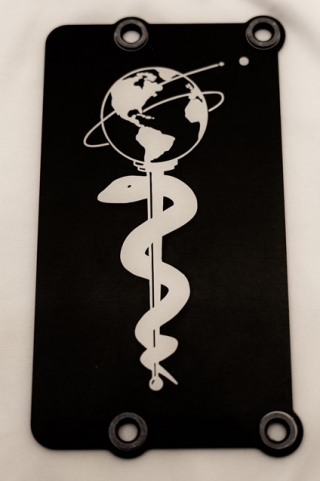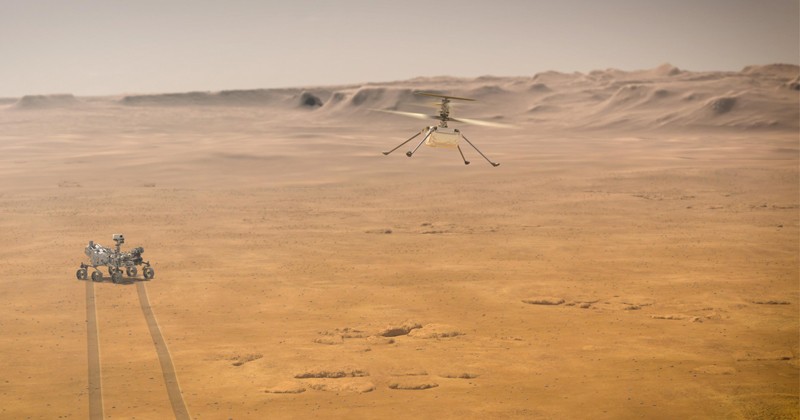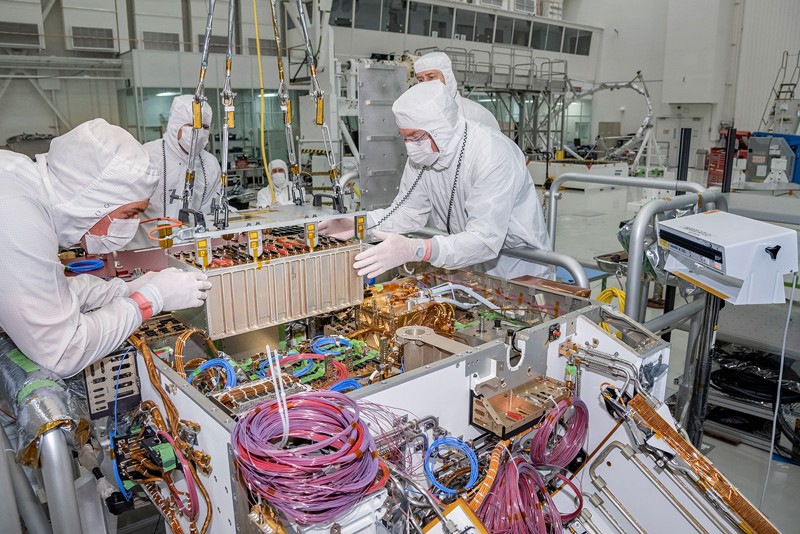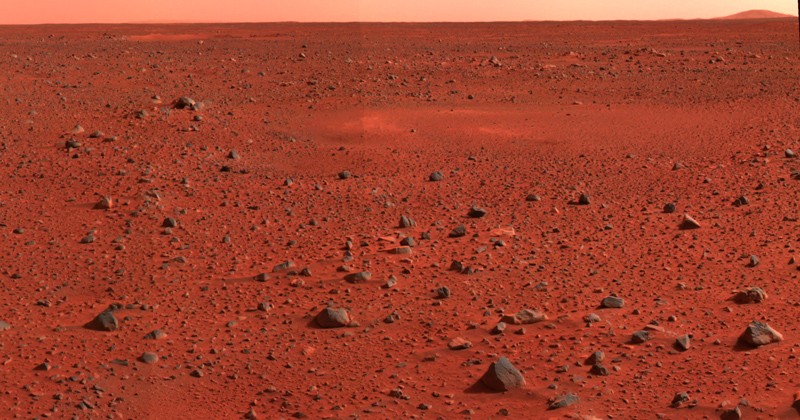Three upcoming missions and related UD research aim to expand knowledge of the red planet
Mars, the reddish planet you can often see just by looking up into the night sky, is in relatively close proximity to Earth’s orbit in the next month or so — a flyby that happens every couple of years.
Those close passes are optimal times for Earthlings to launch things at Mars and three space agencies plan to do so in the next month, including NASA and the first such attempts by the United Arab Emirates and China.
Such missions are exciting to all who wonder about the great expanse of space above us and they are especially exciting to the scientists and engineers who are developing new methods, materials and new questions for even more astounding research in the future.

This illustration depicts NASA’s Mars 2020 rover on the surface of Mars. The mission, targeted for launch in July or August 2020, takes the next step by not only seeking signs of habitable conditions on Mars in the ancient past, but also searching for signs of past microbial life itself.
NASA’s Mars 2020 will send a car-sized rover — Perseverance — to Mars and gather essential information for a much bigger plan: human exploration of Mars. With its focus on such extraordinary feats in the future, NASA is also recognizing the many extraordinary feats happening now on planet Earth with a small plate installed on the exterior of the rover in honor of the healthcare workers who are fighting the global COVID-19 pandemic.
Perseverance, the name suggested by a seventh-grader from Virginia in a NASA contest, seems fitting indeed this year.

Members of NASA’s Mars 2020 Perseverance rover mission installed a plate on the left side of the rover chassis, commemorating the impact of the COVID-19 pandemic and paying tribute to the perseverance of healthcare workers around the world. Made of aluminum, the 3-by-5-inch (8-by-13-centimeter) plaque was attached to the rover in May 2020 during final assembly at Kennedy Space Center in Florida.
Before humans can land on Mars, NASA needs much more information. It wants to put humans back on Earth’s moon by 2024 and establish a sustainable human outpost there by 2028, using that as a testing ground for future missions to Mars.
These missions present extraordinary engineering challenges as well as many opportunities to expand our understanding of these environments, the materials on them and the histories they hold. The technology required is sure to produce significant advances on Earth, too.
Researchers at the University of Delaware have multiple projects related to these upcoming missions.
A few examples include:
- Tingyi Gu, assistant professor of electrical and computer engineering at the University of Delaware, who is developing electronic circuitry that can withstand the high radiation levels encountered in deep space. She has a NASA Early Career Faculty Award for that project and already has test materials flying outside the International Space Station, a project supported by NASA’s EPSCoR program, to see how six months of radiation exposure in near-Earth orbit affects the silicon photonics, developed by Dun Mao, a graduate student in Gu’s lab, at UD’s Nanofabrication Facility.
- Yuping Zeng, assistant professor of electrical and computer engineering, is working to develop power management resources for NASA’s Artemis Mission, a critical challenge for establishment of a base on the Earth’s moon. She is testing gallium nitride transistors as promising and efficient semiconductor devices because of advantageous power capability (DC and microwave), radiation insensitivity, high temperature and high frequency operation, optical properties and low-noise capability and has already demonstrated record-high performances.
- Maria Katzarova, associate scientist in the lab of Norm Wagner, Robert L. Pigford Professor of Chemical and Biomolecular Engineering, is looking for ways to use materials that already are on Earth’s moon or Mars in construction projects that will be necessary there — building launch/landing pads, for example. The goal is to use planetary soil — known as regolith — for these projects and Katzarova aims to develop a formulation of regolith that would function as well as geopolymers, a new class of cement-binding materials with the physical and thermal properties needed in these environments. She is also looking at how such regolith-based cement would flow in these environments and how that would affect 3D printing applications. She is working with graduate student Jennifer Mills and undergraduate Jacob Hewes.

Mars 2020 rover underwent an eye exam after several cameras were installed on the rover at NASA’s Jet Propulsion Laboratory near Pasadena, California.
Launch plans
Though spacecraft and their components are engineered to withstand harsh conditions in space, the weather here on Earth can force postponements and it already has.
The UAE’s Hope orbiter was scheduled to launch first on July 14, then July 16 and now the plan is for sometime between Monday and Wednesday, July 20-22.
NASA’s Perseverance rover has a July 30 launch date at Cape Canaveral Air Force Station in Florida. If all goes well, it will land in Mars’ Jezero Crater on Feb. 18, 2021.
China plans to launch its Tianwen-1 rover within the next month, too.
The optimal launch window closes in mid-August and won’t reopen until 2022.
The name of China’s mission translates to “heavenly questions,” and if all three missions succeed, we will be gathering much more information about Mars by this time next year.
Among its many duties, NASA’s Perseverance will collect rock and soil samples, do preliminary analysis using specialized instruments, then pack those samples into metal tubes and stash them at designated locations. The plan is to retrieve those packages on a future mission for more extensive analysis on Earth.

When NASA’s Ingenuity Mars Helicopter attempts its first test flight on the red planet, the agency’s Mars 2020 Perseverance rover will be close by, as seen in this artist’s concept. Ingenuity, a technology experiment, will be the first aircraft to attempt controlled flight on another planet. When it attempts its test flights on Mars in spring 2021, Ingenuity will remain within a 0.6-mile radius of Perseverance so it can communicate wirelessly with the rover. Perseverance then communicates with relay orbiters around Mars that send the signal back to Earth.
Perseverance will also carry a four-pound helicopter — Ingenuity — which will drop out of the rover onto the surface of Mars and take a few short-distance test flights to see how well its autonomous robotics technology works, information that will be of keen interest to UD’s thriving robotics community.
Other instruments aboard NASA’s rover can detect organic matter, test technology for production of oxygen, and analyze environmental conditions including weather, climate and the dust on the surface. Nineteen cameras will provide unprecedented visuals.

Technicians working on the Mars 2020 rover at NASA’s Jet Propulsion Laboratory install the rover motor controller assembly, the electrical heart of the rover’s mobility and motion systems.
| Photos courtesy of NASA

